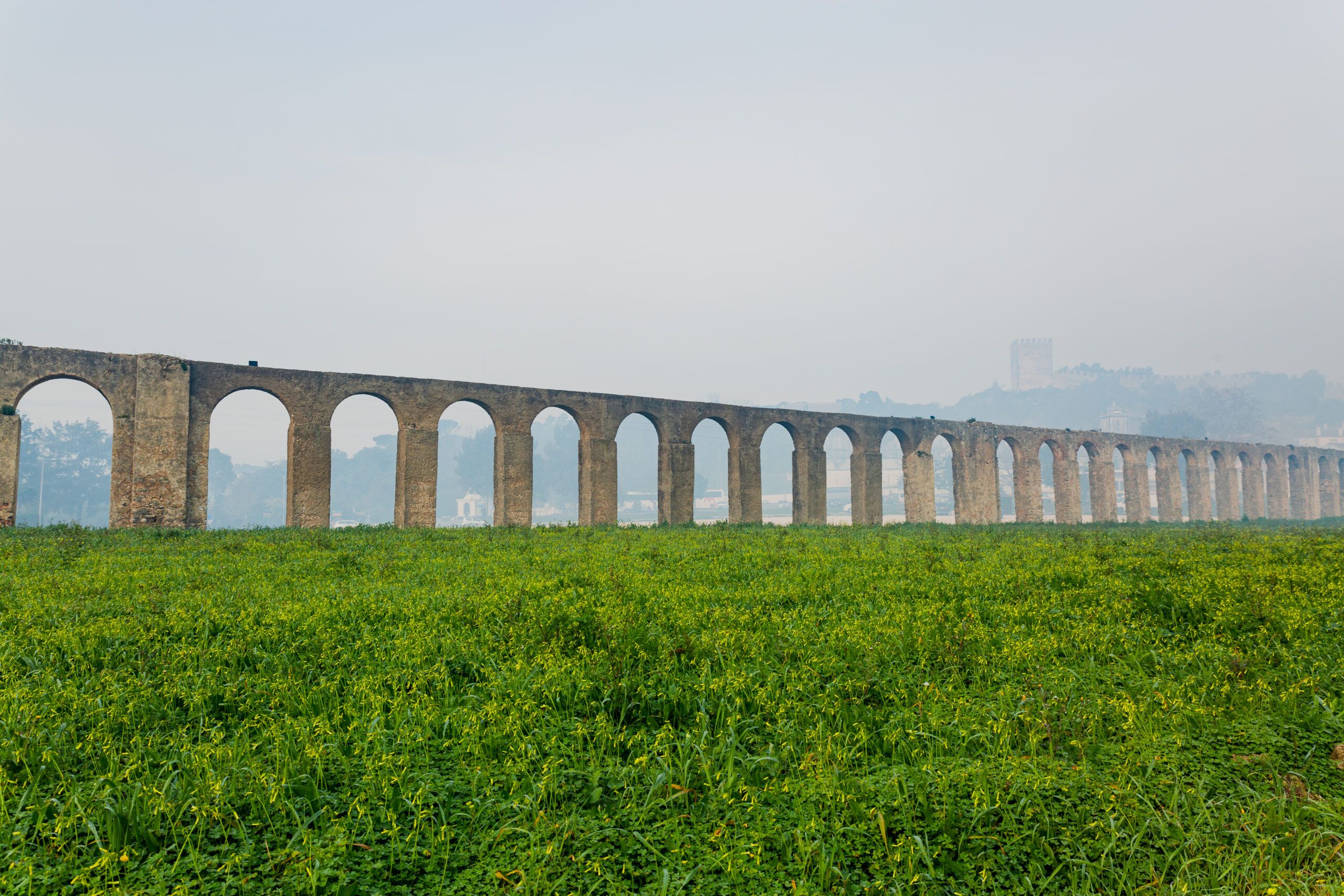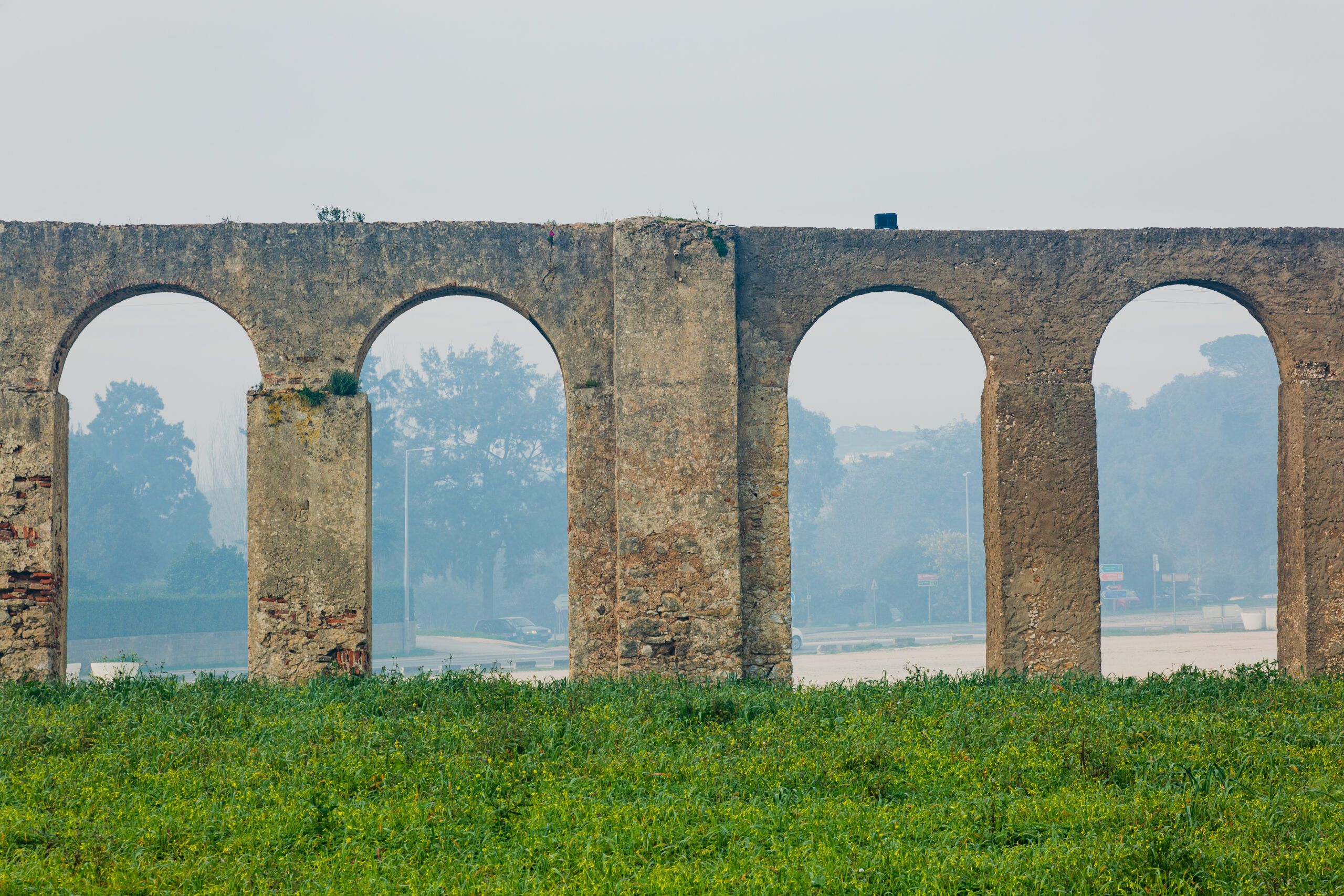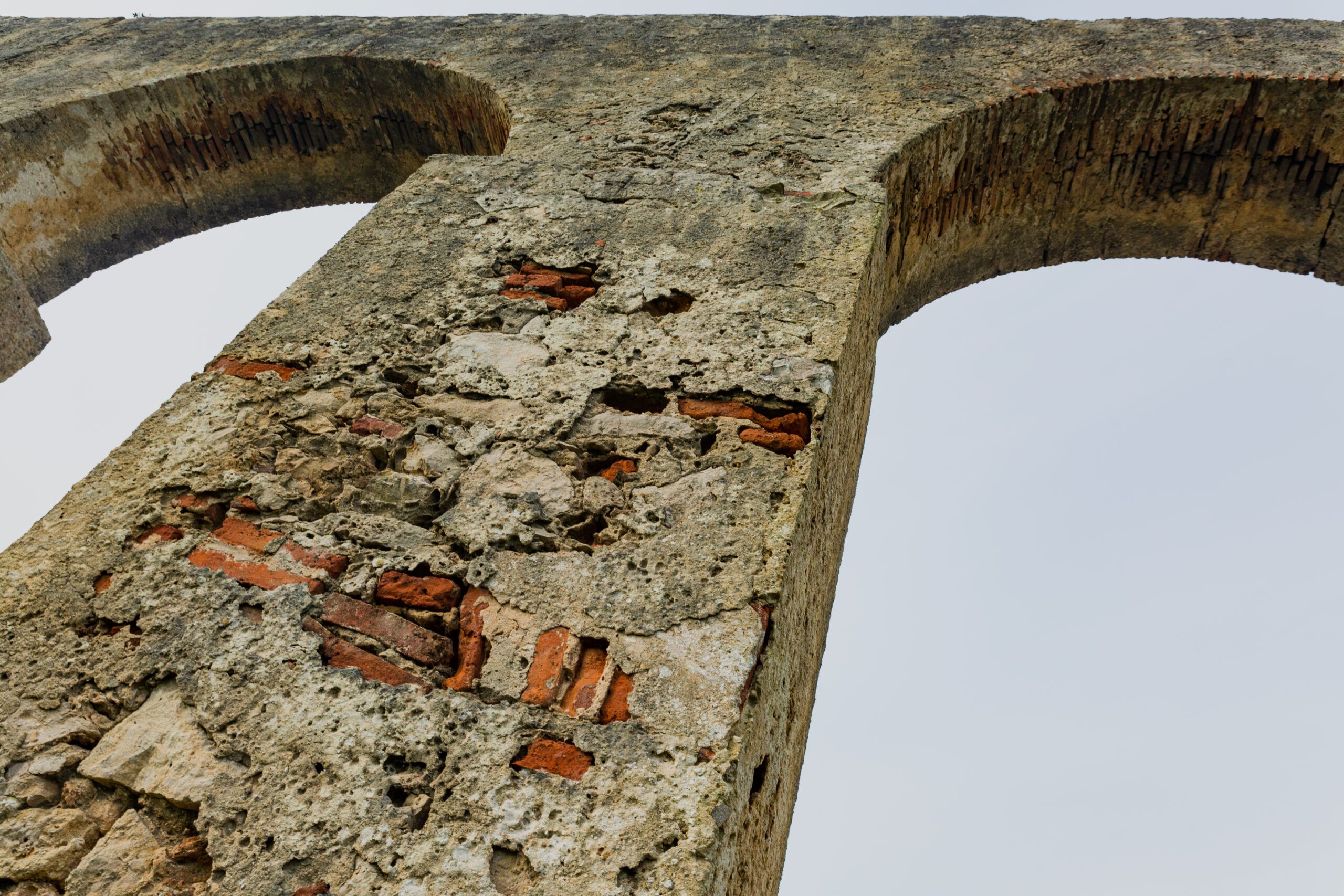Aqueduto da Usseira, Óbidos
Categories/tags: Aqueducts for water management.
Historical context: Constructed around 1573 under the direction of Queen Catherine of Austria, consort of King John III, the Aqueduto da Usseira stands as a testament to the strategic urban planning initiatives undertaken during that era. In exchange for the Várzea lands, the aqueduct was commissioned to supply water to the village of Óbidos, marking the onset of the region’s first comprehensive water distribution system. This endeavor was part of a broader scheme aimed at modernizing the village’s infrastructure, spearheaded by the queen herself.
Although likely completed during the reign of King Philip I, the aqueduct’s construction spanned three distinct sections, featuring meticulously crafted arches and periodic reinforcements with buttresses. Over the centuries, the structure underwent several rounds of maintenance and restoration, attesting to its enduring importance. In 1611, the aqueduct underwent its initial repairs, followed by extensive restoration works in 1622, which also included refurbishments to the associated fountain. Further repairs occurred in 1717, with the construction of the “mãe-de-água” (mother-of-water) fountain added shortly thereafter.
Form – main architectural features: The Aqueduto da Usseira spans approximately 6 kilometers, running from south to north. It consists of three sections: 3 kilometers of underground piping from the Usseira spring to the Vale dos Arcos; about 2.5 kilometers of elevated arches over the Vale dos Arcos to the door of Nossa Senhora da Piedade, within the Óbidos walls; and approximately 500 meters of underground channels from Rua Direita to the Chafariz da Praça. The aqueduct is a single-story arcade structure, primarily built with stone and covered with masonry near the village. Its architectural elements include narrow round arches and slightly pointed or broken wider arches.
Function: The primary function of the Aqueduto da Usseira was to supply water to the village of Óbidos. It achieved this by transporting water from the Usseira spring through underground channels and elevated arches to various fountains and drinking troughs within the village.
Lessons for sustainability: The Aqueduto da Usseira serves as a historical example of sustainable water management practices. Despite its construction centuries ago, its design efficiently utilized natural resources to meet the water needs of the community while minimizing environmental impact, highlighting the importance of sustainable infrastructure development.
Cultural heritage and tourism: As a significant historical and architectural landmark, the Aqueduto da Usseira attracts tourists interested in exploring its impressive structure and learning about its role in supplying water to Óbidos. Visitors can appreciate the craftsmanship of its construction and gain insight into the engineering marvels of the past, contributing to the cultural heritage and tourism appeal of the region.
Location: Óbidos – Portugal

Aqueduto Usseira – Portugal
Sources
E-Cultura (2008). Aqueduto da Usseira. Retrieved March 2nd, 2024, from https://www.e-cultura.pt/patrimonio_item/3555
Sistema de Informação para o Património Arquitetónico (2011). Aqueduto da Usseira. Retrieved February 25th, 2024, from http://www.monumentos.gov.pt/site/app_pagesuser/sipa.aspx?id=4922




